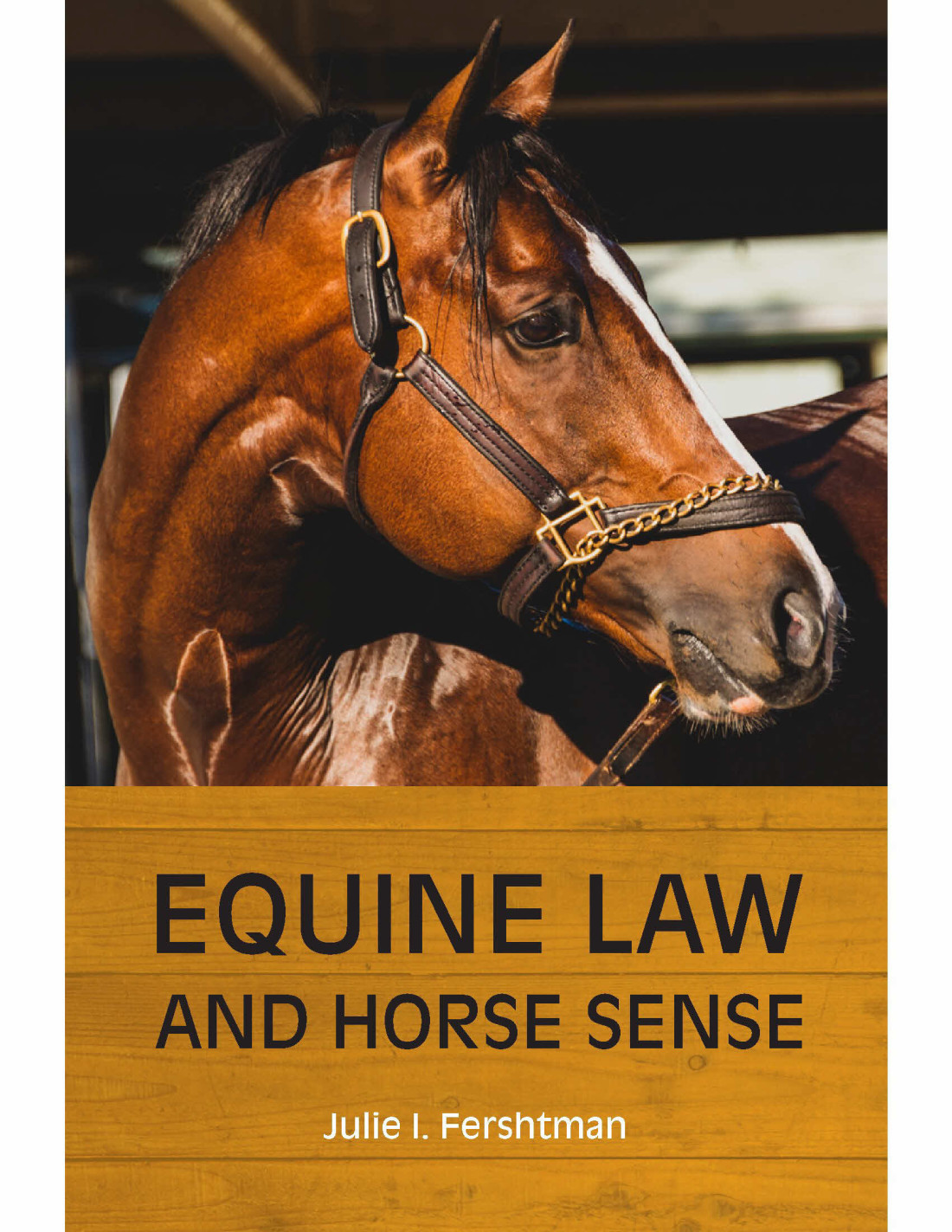
Equine Law Blog
 Foster Swift shareholder Julie I. Fershtman’s latest book, Equine Law and Horse Sense, has just been published by the American Bar Association (ABA).
Foster Swift shareholder Julie I. Fershtman’s latest book, Equine Law and Horse Sense, has just been published by the American Bar Association (ABA).
Because some horse breeds are known to be predisposed to certain genetic conditions, mare owners typically scrutinize the risks before making breeding decisions. They evaluate stallions’ histories, offspring, conformation, health and pedigrees. As a 2016 Texas case showed, mare owners should also pay attention to the language in the breeding contracts they sign.
Breeding season begins soon. Stallion managers and owners can plan ahead by reassessing and, where warranted, updating their contracts. How? Here are a few suggestions.
A few years ago, some valuable breeding stallions contracted Contagious Equine Metritis (“CEM”), an equine venereal disease, while boarded at a breeding farm in Kentucky. The stallion owners sued the breeding farm, alleging that it was negligent in allowing the CEM to spread to their stallions from an incoming stallion, who had been brought to the farm from a Wisconsin quarantine facility where it contracted the CEM. [CEM is regulated by the United States Department of Agriculture (“USDA”), in part through its importation guidelines for horses that arrive from foreign countries and are quarantined. These guidelines also prohibit horses with CEM from being imported into the United States.]
Horse breeding transactions can generate several disputes, including the following:
Problem
The stallion’s show or race schedule prevents its availability for breeding by cooled semen or live cover.
If the breeding will be accomplished by live cover, AI, or shipped cooled semen, which requires the stallion to be available for collection, this problem can be avoided by a contract that specifies a range of dates or months in which the stallion can be available.
